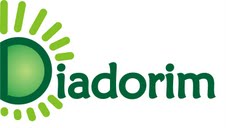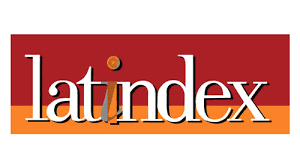MODELING THE RIVER-OCEAN INTERACTION IN SOUTHEASTERN BRAZIL: INITIAL APPROACH IN THE MACAÉ RIVER MOUTH, RIO DE JANEIRO
Keywords:
ocean modeling, computer modeling, ocean-river interactionAbstract
The effects of climate change in environments influenced by watercourses have been causing collective problems that need to be monitored through simulations, in order to adopt prevention and containment measures by city managers. The objective of this work was to carry out a modeling that represents the behavior of the interaction of the Atlantic Ocean with the Macaé River, located in the Macaé and Ostras Hydrographic Region (RH-VIII), state of Rio de Janeiro, Brazil. The computational modeling was performed using the OpenFlows FLOOD software through a built three-dimensional model, and FES (Finite Element Solution), with the FES2014 tidal database. The construction of the model was carried out in a scenario of constant flow of the Macaé River of approximately 200 m³/s, during a period of 24 hours. The computational model initially elaborated still needs adjustments and calibrations. The modeling presented is in its initial phase, and the data used in the simulation can be refined in order to better serve the development of this and other related scenarios.
Downloads
References
Brasil (1997) Lei no 9.433, de 8 de janeiro de 1997. Disponível em: <http://www.planalto.gov.br/ccivil_03/LEIS/L9433.htm>. Acesso em: 16 de agosto de 2020.
ANA (2020) Agência Nacional de Águas e Saneamento Básico. Disponível em: <https://www.ana.gov.br/panorama-das-aguas/mudancas-climaticas-recursos-hidricos>. Acesso em: 02 de setembro 2020.
Cabral SL, Campos JNB, Silveira CDS, Teixeira FADA (2015) Hydrologic and Hydraulic Modelling Integrated With Gis: A Study of the Acaraú River Basin - CE. Journal of Urban and Environmental Engineering, p. 167–174, 9 jun. 2015.
Oliveira JMS, Salla MR (2017) Modelling the Impacts of Wildfire on Surface Runoff in the Upper Uberabinha River Watershed Using HEC-HMS. Journal of Urban and Environmental Engineering, p. 88–98, 21 maio 2017.
Maretec (2012) Descrição do Mohid. Campos dos Goytacazes: Essentia.
BENTLEY INFRAESTRUTURA Disponível em: <https://www.bentley.com/pt/products/product-line/hydraulics-and-hydrology-software/openflows-flood>. Acesso em 15 de dezembro de 2021.
CBH Macaé Ostras. Comitê das bacias hidrográficas dos rios macaé e das ostras - CBH MACAÉ OSTRAS - Bacia Hidrográfica. Disponível em: <https://cbhmacae.eco.br/a-bacia/>. Acesso em: 02 de setembro de 2020.
Trancoso AR, Braunschweig F, Leitão PC, Obermann M, Neves R (2009) An advanced modelling tool for simulating complex river systems. Science of The Total Environment, v. 407, n. 8, p. 3004–3016, abr. 2009.
Iona P (2013) Modeling Floods In Enxoé Watershed. IST Technical University Of Iasi, Roménia.
Lugon Junior J, Tavares LPDS, Kalas FDA, Rodrigues PPGW, Wasserman JCA (2019) Reservoir implantation for flood dampening in the Macaé River basin using the Mohid Land model. Ciência e Natura, v. 41, p. e29, 4 out. 2019.
Tutorial MOHID. Disponível em: https://pt.scribd.com/document/326564608/MOHID-Land-Quick-Start-Guide-v3 Acesso em: 01 de agosto de 2020.
Topodata. Arquivos em colunas xyz (ASCII, extensão .txt). Disponível em: http://www.dsr.inpe.br/topodata/data/txt/. Acesso em: 01 de agosto de 2020.
Downloads
Published
How to Cite
Issue
Section
License
Copyright (c) 2023 Revista Interdisciplinar de Pesquisa em Engenharia

This work is licensed under a Creative Commons Attribution-NoDerivatives 4.0 International License.
Given the public access policy of the journal, the use of the published texts is free, with the obligation of recognizing the original authorship and the first publication in this journal. The authors of the published contributions are entirely and exclusively responsible for their contents.
1. The authors authorize the publication of the article in this journal.
2. The authors guarantee that the contribution is original, and take full responsibility for its content in case of impugnation by third parties.
3. The authors guarantee that the contribution is not under evaluation in another journal.
4. The authors keep the copyright and convey to the journal the right of first publication, the work being licensed under a Creative Commons Attribution License-BY.
5. The authors are allowed and stimulated to publicize and distribute their work on-line after the publication in the journal.
6. The authors of the approved works authorize the journal to distribute their content, after publication, for reproduction in content indexes, virtual libraries and similars.
7. The editors reserve the right to make adjustments to the text and to adequate the article to the editorial rules of the journal.









